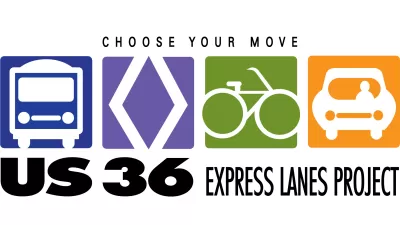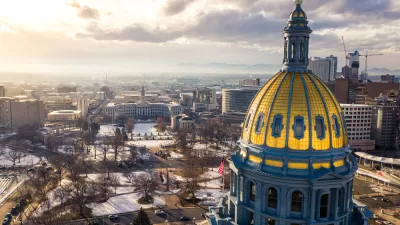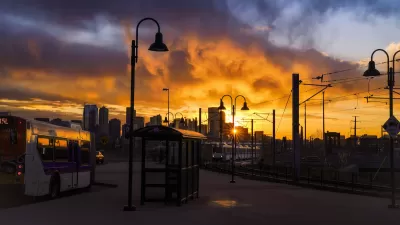Upgrades to U.S. 36, the highway that connects Denver to Boulder, feature a variety of elements intended to reduce congestion and offer alternatives to the traditional solo auto commute. The effort is being called a "21st-century mobility project."

Long known as one of the most congested and least safe highways in the state, when enlightened transportation planners looked to improve U.S. 36 they didn't simply seek to add additional lanes for more vehicles. Rather, they envisioned what may be called the country's first "complete highway."
"Work has begun on an upgrade for U.S. 36 that will incorporate a special fast lane for high-occupancy vehicles, bus rapid transit service, an electronic toll system for single-occupant cars and a bike path," reports John Schwartz. "It is, in other words, a highway designed to encourage people to drive less."
"Plenty of highway upgrades around the country now include some of these features — high-occupancy-vehicle lanes are widespread, and bike lanes are popping up here and there," he adds. "In cities like Birmingham, Ala., Seattle, and Ann Arbor, Mich., the Obama administration is using federal money to help develop roadway projects that combine several ways of getting around."
"But until now, no single highway plan has pulled all of them together, said Victor M. Mendez, the head of the Federal Highway Administration. 'This innovative approach is what we’re looking for in the future,' he said. 'It’s an exciting project.'”
FULL STORY: Highway Expansion Encourages More Than Just Driving

Maui's Vacation Rental Debate Turns Ugly
Verbal attacks, misinformation campaigns and fistfights plague a high-stakes debate to convert thousands of vacation rentals into long-term housing.

Planetizen Federal Action Tracker
A weekly monitor of how Trump’s orders and actions are impacting planners and planning in America.

San Francisco Suspends Traffic Calming Amidst Record Deaths
Citing “a challenging fiscal landscape,” the city will cease the program on the heels of 42 traffic deaths, including 24 pedestrians.

Defunct Pittsburgh Power Plant to Become Residential Tower
A decommissioned steam heat plant will be redeveloped into almost 100 affordable housing units.

Trump Prompts Restructuring of Transportation Research Board in “Unprecedented Overreach”
The TRB has eliminated more than half of its committees including those focused on climate, equity, and cities.

Amtrak Rolls Out New Orleans to Alabama “Mardi Gras” Train
The new service will operate morning and evening departures between Mobile and New Orleans.
Urban Design for Planners 1: Software Tools
This six-course series explores essential urban design concepts using open source software and equips planners with the tools they need to participate fully in the urban design process.
Planning for Universal Design
Learn the tools for implementing Universal Design in planning regulations.
Heyer Gruel & Associates PA
JM Goldson LLC
Custer County Colorado
City of Camden Redevelopment Agency
City of Astoria
Transportation Research & Education Center (TREC) at Portland State University
Jefferson Parish Government
Camden Redevelopment Agency
City of Claremont




























